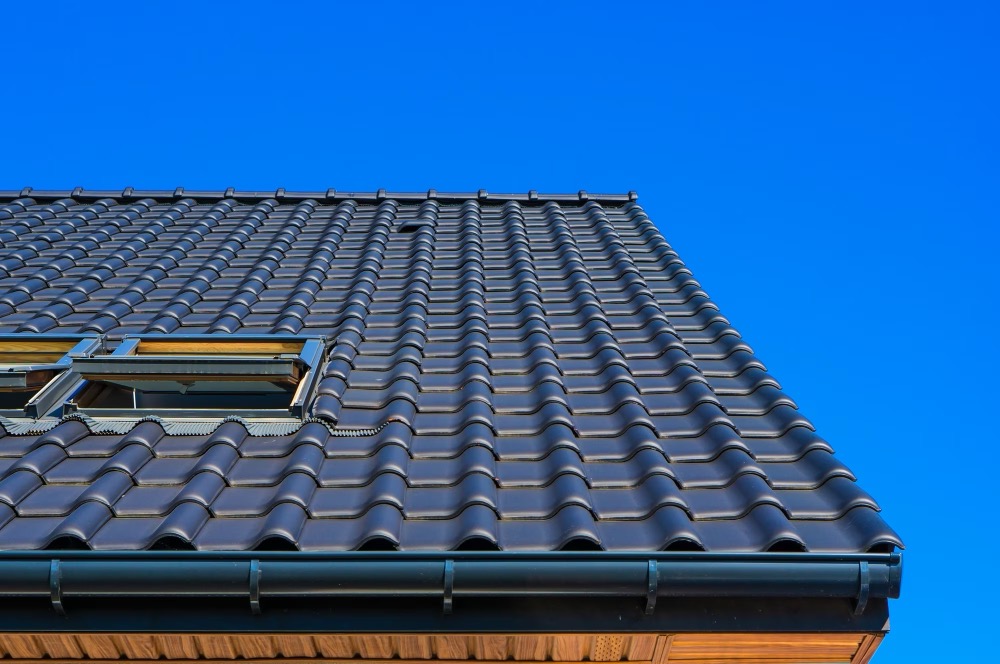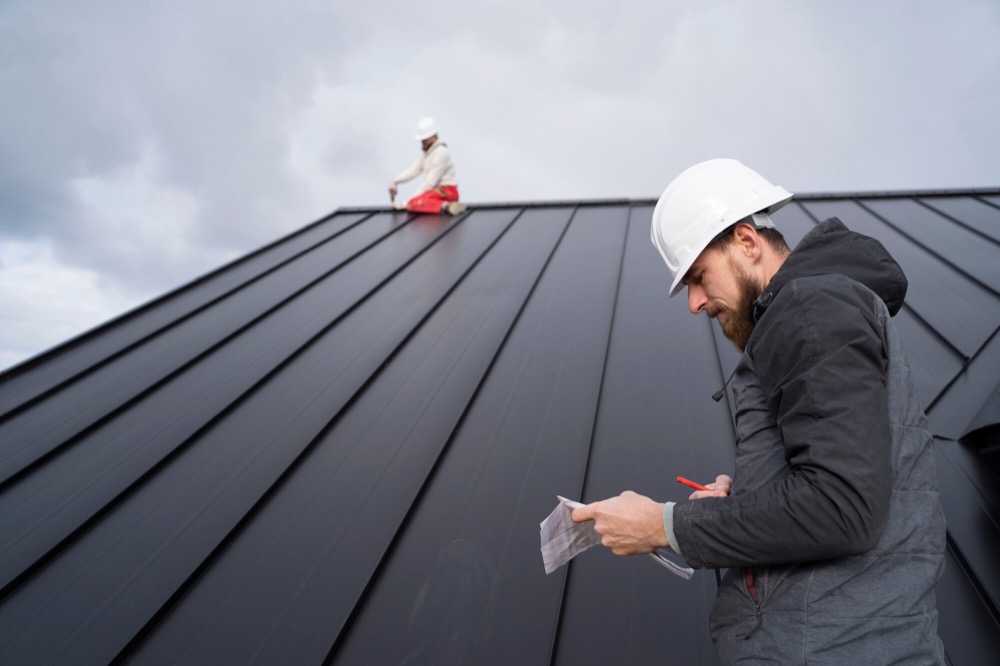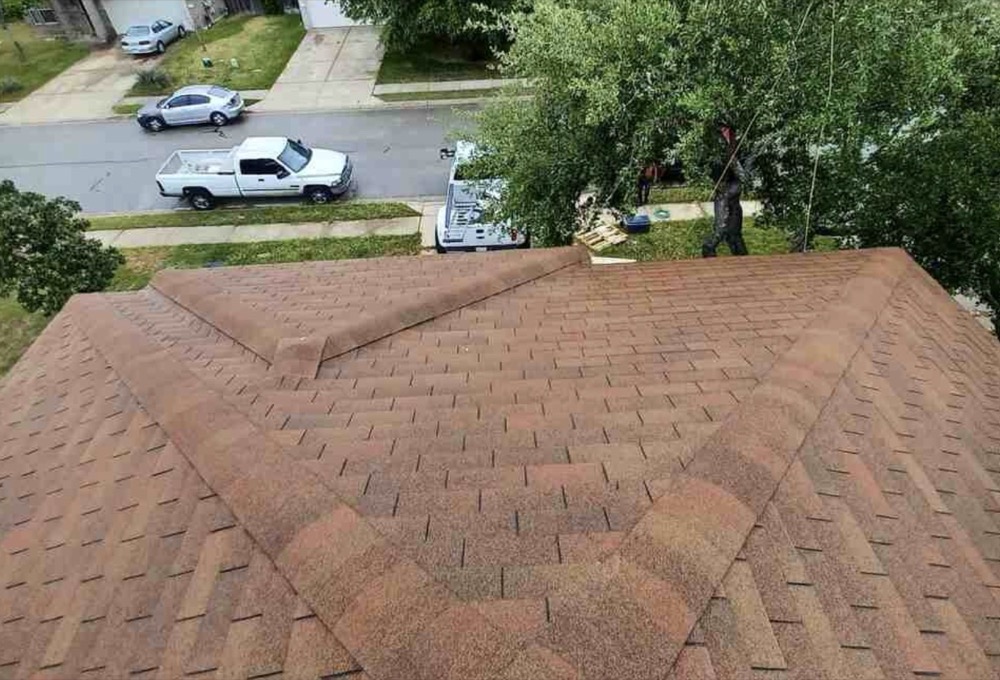Residential Roofing Updates Every Homeowner Should Know About
Intro
When it comes to maintaining your home, one of the most critical aspects is your roof. A well-maintained roof not only protects your home from the elements but also adds to its overall value. However, over time, every roof will need to be replaced. If you're a homeowner facing the prospect of a new roofing project, there are several key updates you should be aware of to ensure a successful and stress-free experience.
Recognizing When It's Time for a New Roof
Identifying the need for a new roof is a pivotal initial step in the journey towards maintaining the structural integrity and aesthetic value of your home. Various indicators can signal that your roof's lifespan is nearing its end. These signs include, but are not limited to, widespread shingle damage such as cracking, curling, or missing shingles, which are often the most apparent. Another critical warning sign is the presence of daylight through your roof boards or spotting water damage in your attic, especially after rainfall, indicating potential leaks that could compromise your home's interior.
Consistent issues with moss, algae, or mold growth on the roof surface might also hint at underlying moisture problems that can weaken the roof structure over time. The age of your roof plays a significant role as well; most roofs have a lifespan of 20 to 25 years, depending on the materials used and the quality of installation and maintenance over the years. If your roof is nearing or has surpassed this age bracket, it may be time to consider a replacement.
Additionally, a sagging roof deck is a more severe, yet less common indication that the structural integrity of your roof might be compromised, requiring immediate attention. Frequent and recurring repairs might also point to the need for a more comprehensive solution, such as a full replacement, to address the root cause of the roofing issues rather than applying temporary fixes.
To accurately assess the condition of your roof and determine the necessity of a replacement, it is advisable to seek the expertise of a professional roofing contractor. These professionals can provide a thorough inspection, identifying issues that may not be visible to the untrained eye and offering recommendations based on their findings. Engaging with a trusted contractor early in the process can help homeowners navigate the complexities of a roofing project with greater ease and confidence.
The Importance of Choosing the Right Roofing Contractor
Selecting an adept roofing contractor is paramount for the success and smooth progression of your roofing project. A contractor with a solid reputation and ample experience can significantly influence the quality of workmanship, adherence to timelines, and overall project satisfaction. To begin your search, start by vetting local contractors with established businesses and a visible presence in the community. This not only facilitates easier communication but also offers peace of mind knowing that they are accessible for any follow-up service or warranty-related issues.
In your quest for the ideal roofing contractor, prioritize those who possess proper licensing and insurance. This is a non-negotiable aspect, as it protects you from liability in the event of accidents or damage during the project. Always request proof of insurance and verify their status with the relevant licensing boards.
When narrowing down your choices, delve into the contractors' past projects and customer testimonials. This insight can be invaluable in understanding their capability to manage projects similar to yours and their track record for customer satisfaction. Online reviews and ratings on trusted platforms can also shed light on their reputation within the community.
Engaging potential contractors in detailed discussions about your project can offer a glimpse into their knowledge and professionalism. Use these interactions to gauge their responsiveness, communication style, and willingness to address your concerns. This step is crucial, as it establishes the foundation for a collaborative partnership throughout the duration of your roofing project.
Finally, consider the value of personal recommendations. Seek advice from friends, family, or neighbors who have recently undertaken roofing projects in Austin. Their firsthand experiences can provide reliable leads and help you avoid pitfalls they may have encountered.
By diligently researching and selecting a roofing contractor who aligns with your specific needs and expectations, you can ensure a seamless and successful roofing project that enhances the safety and aesthetic appeal of your home.
Understanding Your Roofing Material Options
When embarking on a roofing project, the selection of materials is a critical decision that will impact not only the appearance of your home but its functionality and durability as well. The market offers a myriad of roofing material options, each with unique advantages and considerations.
Asphalt shingles are a popular choice among homeowners due to their cost-effectiveness and versatility. They come in various colors and styles, allowing for customization to complement your home's aesthetic. Additionally, asphalt shingles are known for their ease of installation and repair, making them a practical option for many.
Metal roofing, on the other hand, boasts superior longevity and durability. Its resistance to extreme weather conditions makes it an ideal choice for areas prone to severe storms or high winds. While the initial cost may be higher compared to asphalt shingles, metal roofing can offer significant savings over time due to its low maintenance needs and energy efficiency, as it reflects solar radiant heat and can help reduce cooling costs.
Clay tiles represent a premium roofing material, renowned for their exceptional lifespan and classic beauty. Particularly suited for homes with a Mediterranean or Spanish architectural style, clay tiles are highly durable and offer excellent fire resistance. However, they require a sturdy structural foundation due to their weight, which might necessitate additional support.
In choosing the right material for your roofing project, factors such as local climate, your home's architectural style, and budget constraints should be carefully considered. Your roofing contractor can provide invaluable guidance in this process, helping you weigh the pros and cons of each option based on their experience and knowledge of local building codes and requirements. Ultimately, the choice of roofing material should align with your aesthetic preferences, functional needs, and long-term maintenance considerations, ensuring a protective and visually appealing roof for years to come.
Decoding the Roofing Process: What to Expect
Embarking on a roofing project can be an intricate endeavor, with various stages that unfold from start to finish. Initially, a thorough inspection of the existing roof structure is conducted to identify any damages or areas needing attention. This crucial step ensures that any underlying issues are addressed before the installation of new materials.
Following the inspection, the process of removing the old roofing material commences. This phase can be somewhat disruptive, as it involves the dismantling and disposal of the worn-out layers. Homeowners should expect some noise and debris during this period but rest assured, a professional roofing contractor will manage the cleanup and disposal efficiently.
Once the old roof is removed, the contractor will examine the decking for any signs of rot or structural weakness. It is imperative to repair or replace damaged decking to provide a solid foundation for the new roofing material. This stage may also include the installation of new underlayment, which acts as a secondary barrier against water intrusion.
The next phase involves the installation of the new roofing material. Whether you've chosen asphalt shingles, metal roofing, clay tiles, or another option, this step is carried out with precision and care to ensure each piece is securely fastened and properly aligned. Attention to detail during this phase is paramount, as it impacts the roof's overall performance and longevity.
Throughout the project, your chosen contractor should maintain open lines of communication, keeping you informed of progress and any adjustments to the timeline or budget. This transparency allows for a smoother process and helps to align expectations.
Additionally, professional contractors will ensure the work site is left clean and tidy upon completion, removing any leftover materials and debris. The final outcome is a durable, aesthetically pleasing roof that stands the test of time, safeguarding your home against the elements.
Navigating Permits and Regulations
Understanding the intricacies of permits and regulations is a critical step in ensuring your roofing project complies with local laws and avoids potential legal hurdles. The need for permits can vary widely depending on your location, the scope of the project, and specific municipal requirements. Typically, any significant structural changes to your home, including roofing replacement or significant repairs, will necessitate a permit.
Your selected roofing contractor plays a vital role in this process. It's important to partner with a contractor who is not only familiar with the roofing industry's standards but also well-versed in the local building codes and regulations of your area. A reputable contractor will handle the acquisition of all necessary permits on your behalf, streamlining the process and ensuring that your project adheres to all legal requirements.
This phase requires careful attention to detail, as failure to secure the appropriate permits can result in fines, delays, or even the halting of your project. Additionally, work done without the proper permits can lead to issues when it comes time to sell your home, potentially affecting its marketability or leading to post-sale disputes.
Your contractor should also be proactive in discussing with you any neighborhood association rules or homeowner association (HOA) restrictions that might influence your roofing project. In some cases, these entities have specific guidelines regarding roofing materials, colors, or styles to maintain a cohesive aesthetic in the community.
By ensuring your roofing project is compliant with all local permits and regulations, you safeguard your investment and contribute to a smooth, efficient project flow. This process demonstrates due diligence and respect for legal and community standards, laying the foundation for a successful roofing project that enhances your home’s safety, functionality, and aesthetic appeal.
Budgeting for Your Roofing Project
Embarking on a roofing project requires thoughtful financial planning to avoid unwelcome surprises. The costs associated with such endeavors can be substantial, influenced by factors like the material chosen, the project's scale, and unforeseen complexities that might arise during the process. A detailed and transparent estimate from your roofing contractor is invaluable in this regard, laying out all anticipated costs for materials, labor, permits, and any additional expenses that could occur.
It's prudent to engage in discussions with your contractor to understand the nuances of the estimate fully. Queries should extend to potential variables that might affect the final price, such as the removal of the existing roof, any necessary structural repairs not apparent at the outset, and the disposal of old materials. Given the nature of construction work, it's wise to allocate a contingency fund within your budget—typically around 10-20% of the total project cost—to cover unexpected issues or enhancements you may decide to implement.
Additionally, comparing estimates from several contractors can provide a broader perspective on the project's potential cost and help ensure you receive the best value for your investment. However, it's crucial to balance cost considerations with the quality of materials and workmanship. Opting for the lowest bid might not always be advantageous if it compromises the roof's durability and longevity.
In navigating the financial aspects of your roofing project, also consider the long-term benefits of your choices. Higher upfront costs for more durable, energy-efficient materials could translate to savings on repairs, maintenance, and energy bills over time. Engaging with a contractor who offers flexible payment options or financing can also ease the immediate financial burden, allowing you to proceed with the necessary work without undue strain on your finances.
Planning and communication with your chosen roofing professional are key to a financially manageable roofing project, ensuring that you are well-informed and prepared for the investment ahead.
The Role of Warranties in Roofing Projects
Warranties in roofing projects are pivotal, safeguarding your investment against potential defects and poor workmanship. These assurances come in two primary forms: manufacturer's warranties and workmanship warranties. Manufacturer's warranties cover the roofing materials themselves, ensuring they are free from defects that could compromise their performance and longevity. This type of warranty can vary significantly in duration and terms, depending on the manufacturer and the materials selected for your project.
On the other side, workmanship warranties are offered by roofing contractors to guarantee the quality of their installation. These warranties protect you in the event that errors in the installation process lead to problems with your roof's performance. The length and specifics of these warranties can differ widely among contractors, so it's crucial to understand the details and limitations of the workmanship warranty provided by your chosen professional.
When evaluating warranties, it's important to read the fine print and ask questions. Be clear on what actions or factors might void your warranties, such as unauthorized modifications or failure to adhere to maintenance requirements. Understanding the claims process is also essential; knowing whom to contact and the steps to follow can streamline the resolution of any issues that arise.
In discussions with potential roofing contractors, prioritize transparency and clarity regarding their warranty policies. A reputable contractor will be forthcoming about what is covered and for how long, ensuring you have a comprehensive understanding of your protections. This level of detail not only reflects the contractor's confidence in their work but also provides you with peace of mind, knowing that your new roof is backed by robust warranties aimed at ensuring its durability and your satisfaction.
Preparing Your Home for Roofing Work
As the roofing project's start date approaches, a few preparatory steps can ensure the process is smooth and minimizes any potential disruptions to your daily life. Begin by securing or removing outdoor furniture, decorations, and any movable items from your yard or patio areas. This not only protects your belongings from damage but also provides the roofing crew with unobstructed access to your roof.
Consider the safety and well-being of your family and pets during the project. The noise and presence of the work crew can be stressful for pets and children, so arranging for them to stay elsewhere during working hours might be beneficial.
Inform your neighbors about the upcoming roofing work. This courteous step can help manage expectations and maintain good neighborly relations, especially if the project involves early morning start times or extends over several days.
Inside your home, take preventive measures against dust and debris that could filter down from the roof during the project. Cover furniture and valuables in your attic or top-floor rooms with sheets or tarps, and consider temporarily sealing windows or vents that might allow dust to enter living spaces.
Lastly, ensure that the roofing crew has easy access to electrical outlets and a clear path to the work area. This might involve temporarily relocating vehicles or providing specific instructions on where materials can be delivered or staged. Clear communication about these logistical details with your roofing contractor ahead of time can help avoid confusion and delays once the work begins.
By following these preparatory steps, you can facilitate a safer, cleaner, and more efficient roofing project, setting the stage for a successful update to your home's exterior.
Long-Term Roof Maintenance Tips
To safeguard the integrity and extend the lifespan of your new roof, proactive maintenance is crucial. Establishing a regimen for routine inspections plays a significant role in early detection of potential issues. Ideally, inspections should occur bi-annually, in the spring and fall, to address any damages caused by harsh weather conditions. This timeline also aligns with the optimal periods for gutter cleaning, ensuring that water can freely flow away from your roof and foundation, thereby preventing water damage and the accumulation of debris that can lead to roof strain.
Additionally, keeping trees trimmed and away from the roof surface can avert physical damage and reduce the buildup of leaves and branches, which might clog gutters or retain moisture on the roof's surface. Such preventative measures not only maintain the aesthetic appeal of your home but also minimize the risk of pest infestations that could compromise your roof's structure.
It's also beneficial to be vigilant about the condition of your roof's components, including shingles, flashing, and ventilation systems. Any signs of wear and tear, such as cracked, missing, or curled shingles, should prompt immediate attention. Quick repairs can prevent minor issues from escalating into more significant, costly problems.
For those aspects of roof maintenance that require professional expertise, establishing a trusted relationship with a roofing contractor is invaluable. They can provide comprehensive inspections, identify issues not easily spotted by the untrained eye, and perform necessary repairs or replacements to ensure your roof remains in optimal condition.
Engaging in these maintenance practices not only enhances the longevity of your roof but also contributes to the overall health and safety of your home, ensuring it continues to provide shelter and comfort for years to come.
How to Handle Roofing Emergencies and Repairs
When faced with a roofing emergency, swift action is critical to prevent further damage to your home. Common urgent issues include significant leaks, large sections of missing shingles, or visible structural damage, often resulting from severe weather events. The initial step should be to reach out to a professional roofing contractor who can provide an immediate assessment and enact temporary fixes to mitigate water intrusion and protect the interior of your home. These temporary solutions will serve as a stopgap until more comprehensive repairs can be carried out.
It's crucial to document the damage thoroughly, taking photographs or videos that can be useful for insurance claims or for the roofing contractor to better understand the extent of the repairs needed. Avoid attempting DIY fixes on significant damages, as this can lead to personal injury or exacerbate the problem.
After stabilizing the situation, your contractor will develop a plan for permanent repairs. This plan should address all areas of concern and may include replacing damaged shingles, repairing or replacing sections of the roof structure, and ensuring that your roof’s drainage system is functioning correctly to avoid future issues.
Maintain regular communication with your roofing contractor throughout the repair process to stay informed about the progress and any changes in the scope of work. This partnership is essential for addressing roofing emergencies effectively and restoring the safety and integrity of your roof with minimal delay.
‹ Back









